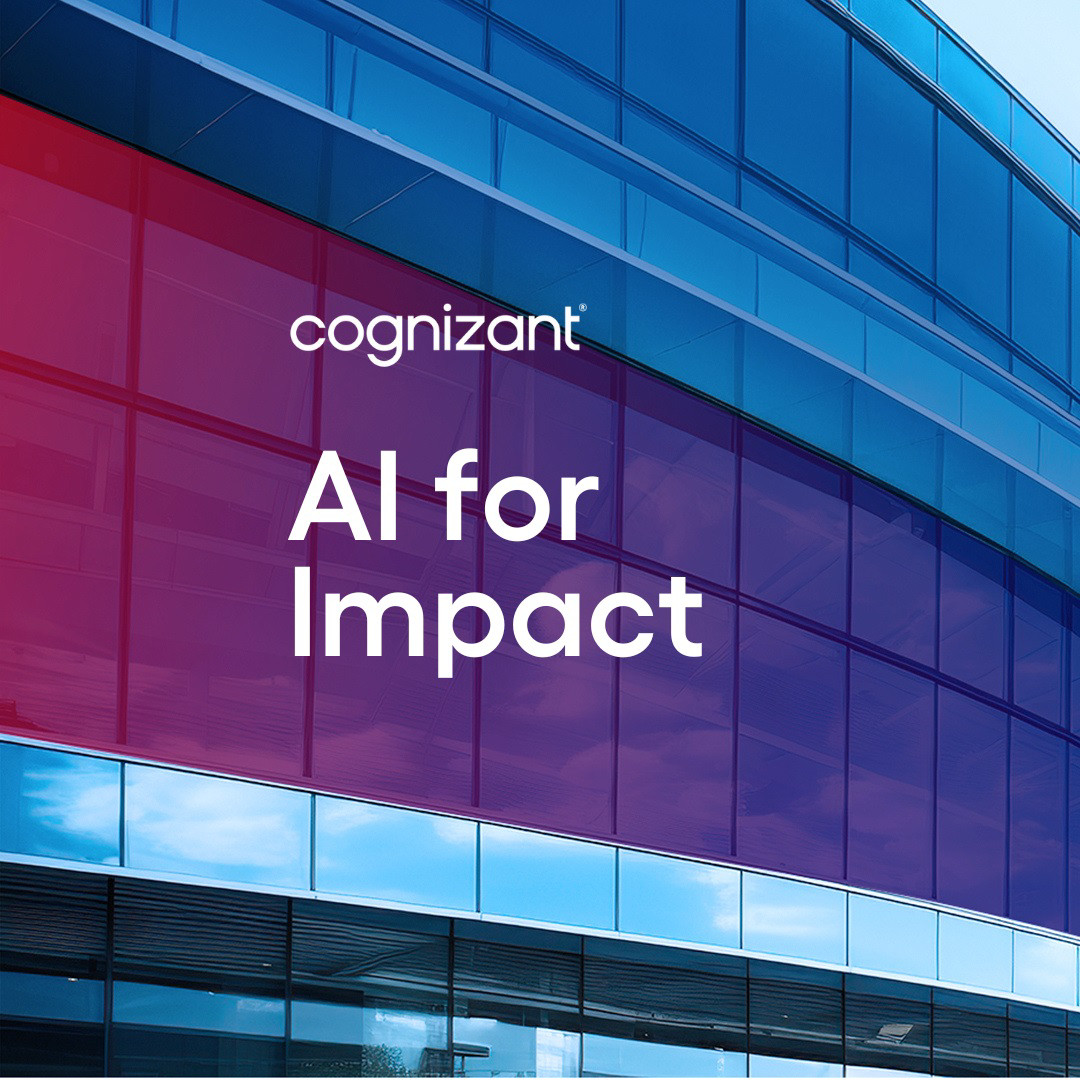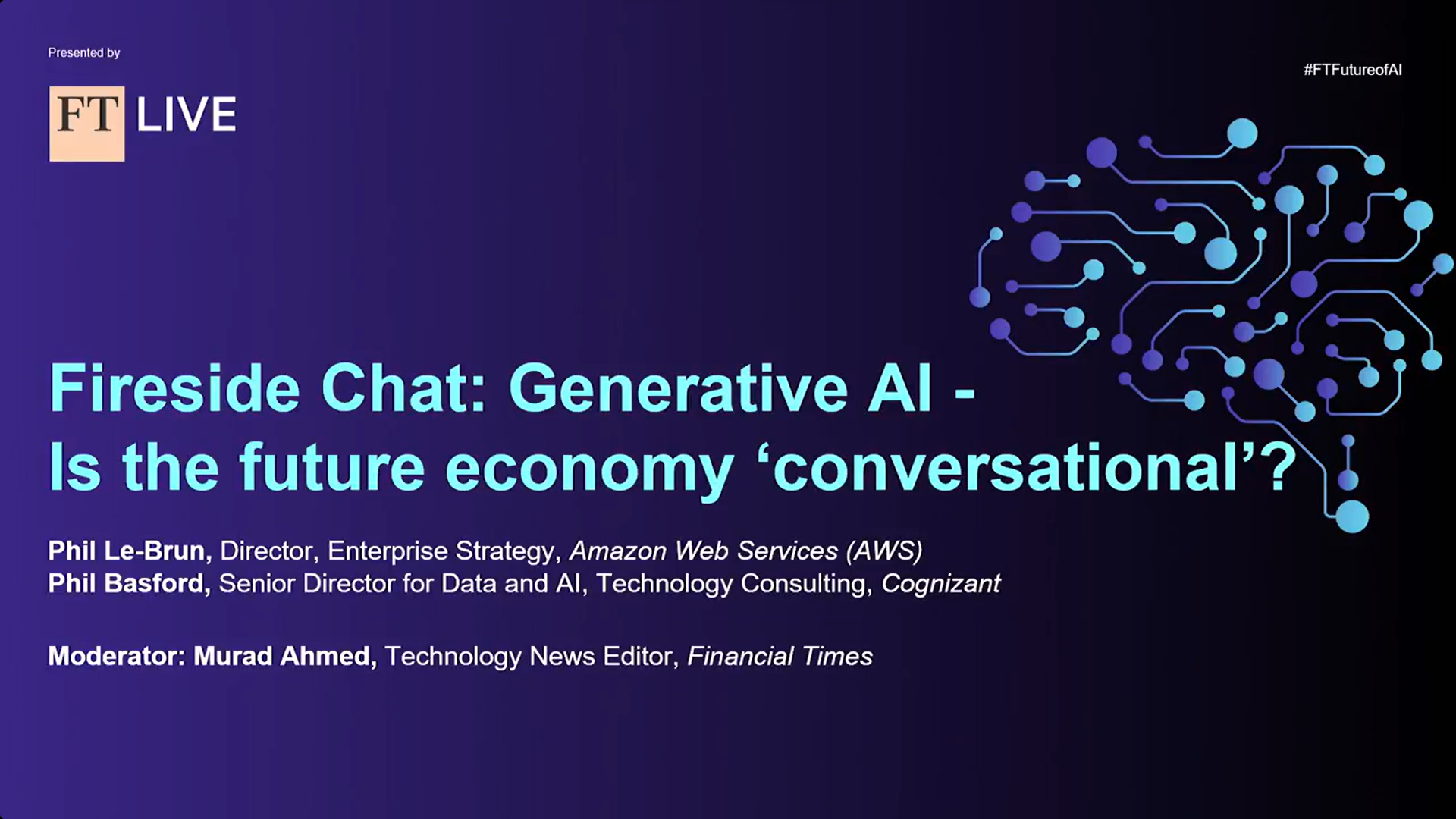Cognizant recently sponsored FT Live – Future of AI in London. The event brought together the leading thought leaders from the UK & around the world, including Deep Mind, GitHub, Nvidia, Microsoft, Amazon and Cognizant, with some of UK Plc’s most influential leaders in attendance. Even the UK Secretary of State for Science, Innovation and Technology and the Governor from New Jersey were there!
In a year where AI had dominated discussions, it was expected to be a lively event and did not disappoint; from AI risks to geopolitics and regulation, and most importantly adoption, success to date and what comes next. To tackle the hardest question and guess the future, Phil Le Brun (AWS) and I had a fireside chat with Murad Ahmed (Technology News Editor, Financial Times) about whether we should expect a conversational economy in future.
You can recap on our session in the video below. However, I wanted to take a little more time exploring what “conversational” really means. As I said in my closing remarks… it’s much richer than just “audio” processing - no one wants another wave of chatbots.
Chatbots
For the last decade, to have a conversation between humans and AI, we have had to match what humans are saying to a defined script (Utterance). Next, we picked out the entities (or Intents) using Natural Language Processing, then perform the actions the humans wanted and finally sent a scripted answer back to the human with limited personalisation. However, when the conversation goes off script, covers multiple topics, or the lines get muddled, the conversation breaks down. This breakdown causes frustration and a lack of trust in AI, meaning we instead want to talk to another human.
Understanding language – what’s change?
Generative AI (gen AI) has brought a much-needed upgrade to Conversational AI. The Large Language Models (LLMs) behind Gen AI mean that “scripts” are not needed anymore. Instead, we can give topics that can be discussed and actions to be delivered – leading to an unscripted conversation that’s more engaging. We have seen this already, most famously, with ChatGPT, even if this is a lot more than the LLM it uses (GPT).
Knowledgeable and capabilities
As LLMs are trained to a certain point using general data, there has been a lot of focus on how knowledgeable gen AI is. There are various techniques to securely add private or company-specific knowledge to an LLM to make it more relevant (understanding of your products, services, procedures and background) which can enable you to become an SME for your customers and employees. This is before you incorporate capabilities to enable action – for example, placing an order.
Hyper personalisation
Knowing the customer or employee is critical to the success of Conversational AI; it needs to avoid going off script, remember historic discussions and the user’s history (subject to permissions) to ensure the current conversation is effective. Personalising these capabilities takes this to the next level, for example knowing what time to schedule a delivery and what offers might appeal to the buyer. During our fireside chat, I shared an example of Audi Volkswagen in the Middle East proactively targeting car servicing.
Beyond audio
We now have technology that talks to us, understands who we are and what we want, and does things for us. However, this doesn’t mean that it truly knows what we mean – humans don’t just talk, we use expressions and body language. Bringing these elements to Conversation AI will truly differentiate, particularly with mass availability of Gen AI transformation the way that consumers expect to interact with companies and products.
Experience
With Conversation at the heart of these experiences, it’s easy to see how ChatGPT is now engaging millions of users worldwide. To get to this point, a lot of time has been spent understanding the user experience and how it needs to both feel and make people feel – the human quality. Feeling needs to be at the centre of Conversation, it’s not a “bolt on”. Given these standards in experience, it’s clear that users will want these to be consistently apply across all their digital interactions.
Based on this conclusion, a conversational economy isn’t as far-fetched as it may initially seem. The technology capability has caught up, and in places exceeded, the desire for experience-led interactions. Organisations that succeed will be those who can ensure feel-good conversations which are high fidelity and have meaning.















